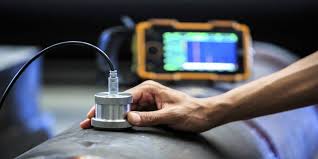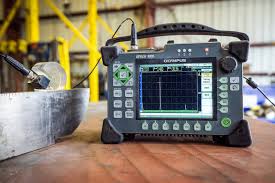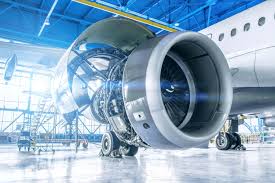Ensuring Safe Operations: Oil Rig Nondestructive Testing in Egypt
Oil rig nondestructive testing is an essential process that ensures the safe and efficient operations of oil rigs. In Egypt, the implementation of nondestructive testing on oil rigs is crucial for maintaining the integrity of the equipment and preventing potential hazards. This article will explore the importance of nondestructive testing in ensuring safe operations on oil rigs in Egypt, and the methods and practices employed in the industry.
Ensuring safe operations on oil rigs in Egypt is crucial for the safety of workers and the environment. Nondestructive testing (NDT) plays a critical role in this process by allowing for the inspection and assessment of equipment and structures without causing damage. NDT methods such as ultrasonic testing, radiography, magnetic particle testing, and visual inspection are used to detect flaws or weaknesses in equipment such as pipelines, pressure vessels, and drilling components. These tests help to identify potential hazards and ensure that the rig is operating safely and efficiently. By conducting regular NDT inspections, oil rig operators can minimize the risk of accidents and environmental damage, ultimately contributing to a safer and more sustainable industry in Egypt.
The Importance of Nondestructive Testing for Oil Rigs in Egypt

Nondestructive testing (NDT) is crucial for oil rigs in Egypt to ensure the safety and integrity of the equipment and infrastructure. This is especially important in a country like Egypt, where the oil and gas industry plays a significant role in the economy. NDT techniques such as ultrasonic testing, radiography, and magnetic particle testing are used to detect potential flaws, defects, and corrosion in critical components such as pipelines, pressure vessels, and structural elements of the oil rigs. By identifying these issues early on, operators can take proactive measures to address them and prevent catastrophic failures that could lead to environmental damage, injury, or loss of life. Furthermore, NDT helps to extend the lifespan of the equipment and reduces the risk of unexpected downtime and costly repairs. It also ensures compliance with regulatory standards and enhances the overall efficiency and productivity of the oil rig operations. Overall, nondestructive testing is a vital maintenance and safety tool for oil rigs in Egypt, helping to protect both the environment and the people involved in the industry.
Innovations in Nondestructive Testing Techniques for Oil Rigs in Egypt

Innovations in nondestructive testing (NDT) techniques for oil rigs in Egypt have been driven by the need to ensure the safety and structural integrity of these critical infrastructure assets. One such innovation is the use of advanced ultrasonic testing (UT) methods, such as phased array ultrasonics, which offer improved defect detection and sizing capabilities compared to traditional UT techniques. Additionally, the use of advanced NDT technologies, such as digital radiography and guided wave testing, has become more commonplace in the inspection of oil rig components. These methods allow for the rapid inspection of large areas and can detect defects in complex geometries that may be difficult to access using traditional NDT methods. Furthermore, the integration of robotics and drones into NDT inspections has enabled more efficient and cost-effective monitoring of oil rig structures. These technologies can access hard-to-reach areas and provide real-time data on the condition of critical components, allowing for proactive maintenance and repair. Overall, the adoption of these innovative NDT techniques in the oil and gas industry in Egypt has led to improved safety, reduced downtime, and greater confidence in the structural integrity of oil rig assets.
Ensuring Safety and Efficiency: Nondestructive Testing in Egypt's Oil Industry

Egypt's oil industry relies on nondestructive testing (NDT) to ensure the safety and efficiency of its operations. NDT techniques, such as ultrasonic testing, radiographic testing, and magnetic particle testing, are used to inspect equipment, pipelines, and infrastructure for potential defects and flaws without causing any damage. This helps to identify any structural weaknesses or integrity issues, preventing potential accidents or environmental damage. NDT plays a crucial role in maintaining the integrity of equipment and ensuring the safety of workers in Egypt's oil industry. Additionally, it helps in optimizing operational efficiency by identifying potential areas for maintenance and reducing downtime. Overall, nondestructive testing is a vital tool in the ongoing efforts to uphold safety and efficiency in the oil industry in Egypt.
Challenges and Solutions in Implementing Nondestructive Testing on Egyptian Oil Rigs
Challenges in implementing nondestructive testing (NDT) on Egyptian oil rigs include the high cost of NDT equipment and training, as well as the lack of qualified NDT personnel. In addition, there may be cultural resistance to change and a lack of awareness of the benefits of NDT. Solutions to these challenges include investing in NDT equipment and training for personnel, as well as partnering with international NDT organizations to access expertise and resources. It is also important to educate and raise awareness among workers and management about the importance of NDT in ensuring the safety and integrity of oil rigs. Additionally, creating a supportive regulatory framework for NDT implementation can help overcome resistance to change.
The Future of Nondestructive Testing in Egypt's Oil Rig Operations
ndt weld testing
Nondestructive testing (NDT) plays a crucial role in ensuring the safety and integrity of oil rig operations in Egypt. As the country continues to explore and develop its oil and gas resources, the demand for advanced NDT technologies is expected to grow. One of the key trends shaping the future of NDT in Egypt's oil rig operations is the adoption of digital and automated inspection techniques. This includes the use of robotics, drones, and advanced sensors to conduct inspections in challenging environments, such as offshore platforms and pipelines. Additionally, there is a growing emphasis on data analytics and predictive maintenance in the oil and gas industry. This means that NDT techniques will not only be used to detect existing flaws and defects, but also to collect data for trend analysis and to predict potential failures before they occur. Furthermore, there is a push towards implementing more advanced NDT methods, such as guided wave testing, phased array ultrasonics, and computed radiography, to enhance the accuracy and efficiency of inspections in oil rig operations. Overall, the future of NDT in Egypt's oil rig operations is likely to be characterized by the integration of digital technologies, advanced inspection methods, and a focus on data-driven decision-making to ensure the safety and reliability of oil and gas infrastructure.
Advancements in Nondestructive Testing Technology for Egypt's Oil Rigs
Recent advancements in nondestructive testing (NDT) technology for Egypt's oil rigs include the use of advanced ultrasonic testing methods for detecting defects in critical components such as pipes, valves, and pressure vessels. Other advancements include the use of remote visual inspection tools, such as robotic crawlers and drones, to inspect difficult-to-reach areas of the rigs without the need for time-consuming and costly disassembly. Additionally, there has been a move towards the use of digital radiography and computed tomography for more accurate and detailed imaging of internal structures and welds, allowing for better detection of flaws and defects. This technology provides more accurate and reliable results while reducing inspection time and minimizing the risk to personnel working on the rigs. Furthermore, there has been a focus on the development of advanced data analysis and predictive maintenance software, which can provide real-time monitoring and analysis of equipment performance, allowing for early detection of potential issues and proactive maintenance to prevent costly downtime and equipment failure. Overall, these advancements in NDT technology are helping to improve the safety, reliability, and efficiency of Egypt's oil rigs by providing more accurate and comprehensive inspection data, leading to better-informed maintenance and repair decisions.
Training and Certification for Nondestructive Testing in Egypt's Oil Sector
aws ndt
Training and Certification for Nondestructive Testing (NDT) in Egypt's oil sector is important for ensuring the safety and reliability of oil and gas infrastructure. The Egyptian Petroleum Research Institute (EPRI) offers a variety of training programs in NDT techniques such as ultrasonic testing, radiographic testing, magnetic particle testing, and visual testing. These programs are designed to provide participants with the knowledge and skills required to perform NDT inspections according to international standards. EPRI also provides certification exams for those who have completed the training programs and wish to become certified NDT inspectors. These exams test participants on their understanding of NDT principles and their ability to effectively perform NDT inspections. In addition to EPRI, there are other international organizations and training providers that offer NDT training and certification programs in Egypt, providing a range of options for individuals looking to enhance their skills in this field. These programs can help professionals in the oil sector to stay up to date with the latest NDT techniques and technologies, ultimately improving the quality and reliability of NDT inspections in the industry.
Comments
Post a Comment